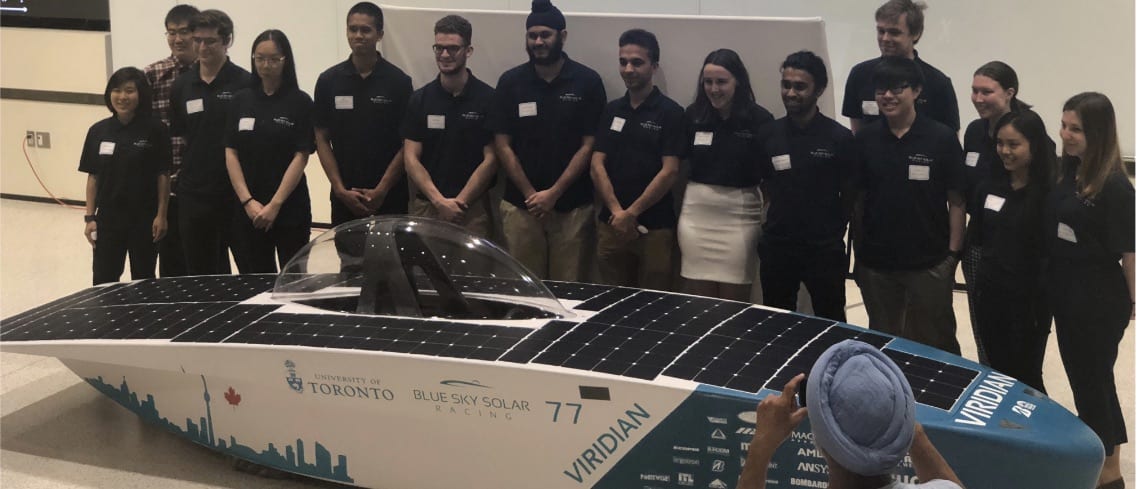Update: November 27, 2019
The Blue Sky Solar Racing team recently sent us updates about their solar car and we are proud to share that they managed to finish the race and arrived in 11th place. This year was particularly brutal for the contestants who had to deal with adverse weather conditions. Other competing cars caught fire or were flipped upside down, but the Viridian stayed strong and not only raced for 3,000 kilometers but arrived in one piece. Congratulations to the students from the University of Toronto, who now traded the warmth of Australia for the snows of Canada. We can’t wait to see what they will come up with next.
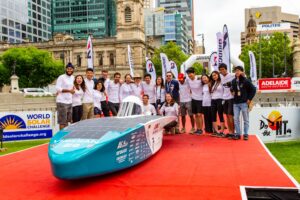
Original Article: July 4, 2019
Last week, the Blue Sky Solar Racing team, made of undergraduate students from the University of Toronto, unveiled Viridian, their solar car that uses numerous STM32 microcontrollers. The automobile will compete this October in the Bridgestone World Solar Challenge organized in Australia. The race takes place every two years, and the Canadian university introduced a new aerodynamic design to improve efficiencies while also building on the previous generation that inaugurated their use of ST’s MCUs. Viridian is their tenth iteration as the school started to compete in 1996 – 1997 with a car they nicknamed Blue SunDay and which placed third overall. The new model uses STM32H7s for motor control operations and about ten STM32L4s for the battery monitoring system, among other things. They are also considering using a SensorTile to track certain aspects of the car, but are still studying the feasibility of that part of the design.
Undergraduates Using a Solar Car to Change the World
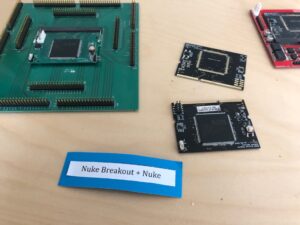
The race demands that cars travel 3,000 kilometers (1,864 miles) from Darwin to Adelaide, thus crossing the country from North to South, in about a week. The competition starts on October 13 and will pit about 100 teams from all over the world and group them in three classes. Viridian competes in the Challenger class, meaning that cars have a single seat and must go as fast as possible. The Cruiser class uses vehicles with two or more seats and focuses on practicality, whereas the Adventure class is non-competitive and groups cars from previous events. After testing their vehicle on nearby airport runways, the Blue Sky Solar Racing team will ship their project to Australia and spend time assembling it before the big event. There aren’t many opportunities to run extensive trials and students must thus prioritize reliability to reduce the risk of catastrophic incidents.
The race is also highly symbolic. As the University of Toronto explained during their unveiling, the average distance traveled by everyone attending their event approximated 3,000 kilometers, but Viridian will travel a similar distance without a single emission. The students, teachers, and staff behind this project have this passion to make the world a better place by finding solutions to reduce our carbon footprint but accomplishing it by running this race is far from easy. Professors compared the preparation for the World Solar Challenge to a full-time job, which students undertake on top of their full workload. It was thus our privilege to support the Blue Sky Solar Racing team in their desire for excellence, and their vision for a greener planet.
Students Using STM32 Microcontrollers to Get More Power and Improve Efficiencies
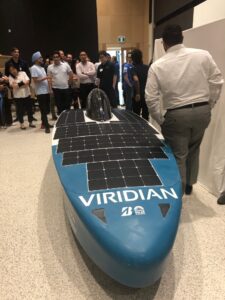
The solar car is a fascinating project because as James Liu and Hubaab Hussain, electronics and computer engineering students that worked on Viridian, explain:
“Our courses don’t directly relate to this project, but by reading the documentation and learning about Arm architectures, we managed to work on development boards, then create our custom solution, which was fully functional on our first try.”The Blue Sky Solar Racing team’s last car, the Polaris, was a transformative experience because it moved from 8-bit microcontrollers to STM32 32-bit components. Other schools undertook similar initiatives as the switch enabled them to create more complex and robust systems, integrate more features, and boost overall performance. It would be a grave mistake to underestimate the difficulty inherent to this endeavor. Teams must design extraordinarily robust and efficient systems that they can repair with the little means at their disposal during the race. The 2015-2017 model had one major flaw: by sticking to STM32L4s only, the students ran out of analog-to-digital converters. They pushed their design so much and took such great advantage of the 32-bit architecture at their disposal that they quickly ran into limitations, thus explaining why they chose to use STM32H7 in Viridian.
Engineers Using CAN buses and Hardware Features to Adapt to Rigorous Constraints
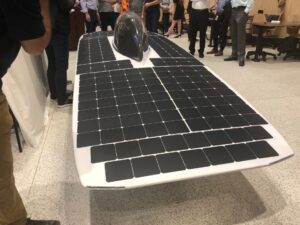
One of the most challenging constraints when building a vehicle like Viridian is the fact that the need to enhance aerodynamics significantly through the use of carbon fiber shells also means that laying wires is particularly cumbersome. As a result, students used multiple STM32H7, all connected to a CAN-FD bus. Such a design enables them to keep each system isolated while reducing cables. CAN-FD also offers better throughputs and lower power consumption than the more traditional controller area network. On the other hand, the STM32L4s take care of the battery management system, which uses a distributed approach to solve the issue of cabling. Instead of having one system monitoring each of the six battery modules, which would require a complicated wiring job, an embedded system tracks each module, and they are all communicating with each other through a CAN bus, which greatly simplified designs.
The other STM32L4s are mostly inside the driver control interface, which includes the use of a display that takes advantage of the hardware Chrom-ART acceleration for the reproduction of 2D objects (DMA2D), something that is increasingly popular on STM32L4 and STM32L4+ smartwatches and wearables, among others. It also processes data from multiple sensors and sends information to the driver about the state of the car. And James and Hubaab shared that:
“Technically, we could have wired this part of the car to the STM32H7 module in charge of motor control, but it was so simple and intuitive just to build an independent module, further enhancing wiring and isolation.”As they explained, the Blue Sky Solar Racing team made extensive use of STM32CubeMX and relied on our Hardware Abstracted Layer libraries to quickly take advantage of the MCU’s features.
Visionaries Using SensorTile Modules to Get Better Information on their Solar Car
At the time of Viridian’s unveiling, the undergraduates from the University of Toronto were still examining the use of a SensorTile module. The board remains an excellent solution for teaching embedded systems to undergraduates, but in the case of this solar car, they are thinking of using it on the center of gravity of the vehicle to correlate it with the data coming from the motor control system, thus improving the accuracy of various measurements and further optimize its operations. The mechanical team is also hoping to use it to determine the dynamic feedback of their suspension arm, thus getting a better view of its performance while verifying that the system behaves as they expect.

- Discover Viridian and the Blue Sky Solar Racing team
